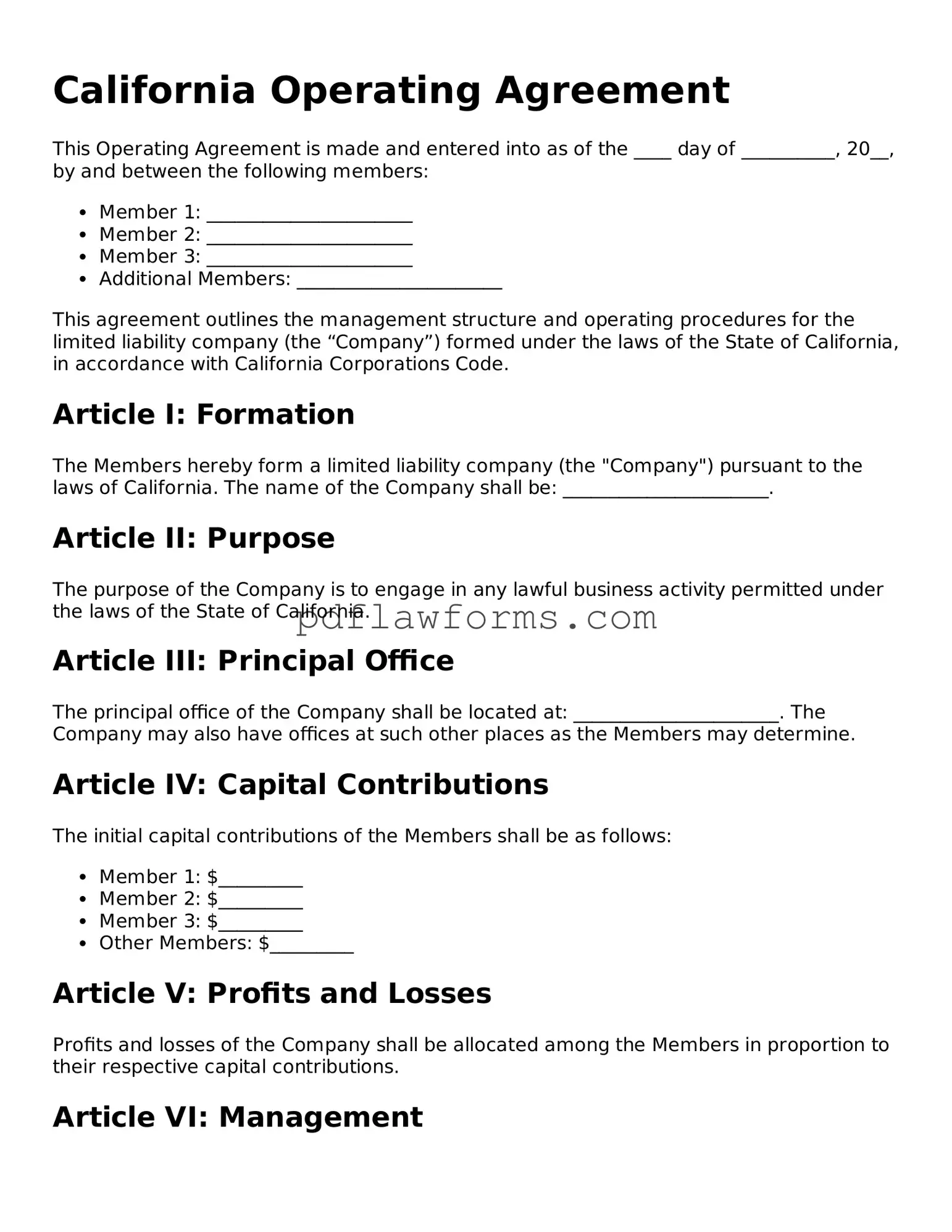Operating Agreement Form for the State of California
The California Operating Agreement is a vital document that outlines the management structure and operational procedures of a limited liability company (LLC) in California. This agreement serves as a roadmap for how the LLC will function, detailing the rights and responsibilities of its members. Understanding this form is crucial for ensuring that your business runs smoothly and in compliance with state laws.
Ready to get started? Fill out the form by clicking the button below.
Make My Document Online
